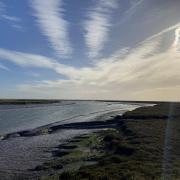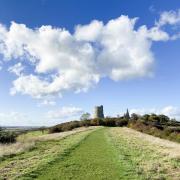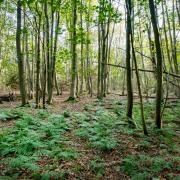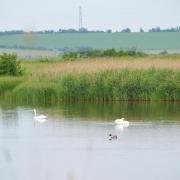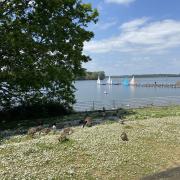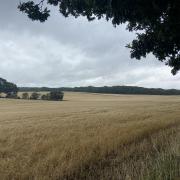A new government initiative is set to give complete access to a coastal path circumnavigating the coast of England. With its huge coastline, few county’s will be impacted more than Essex, but will this be a good thing for the county’s tourism or a further hindrance to local farmers?

Essex can be rightly proud of its 350 miles of coastline, the longest of any county in England. Diverse, beautiful and teeming with wildlife, from saltmarsh to sandy beach, it’s a landscape that demands to be explored.
Soon, under the government’s England Coast Path initiative, our county’s coast, as well as coastlines around the country, is to be opened up to the public so everyone can enjoy walking unhindered along almost every mile. Other sections in East Anglia, such as in Norfolk, are already completed as part of a drive to ensure that by 2020, England is home to a 3,000-mile coastal walking route – one of the longest in the world.
Administered by Natural England, the government agency responsible for the nation’s natural environment, the project has been made possible by new Coastal Access regulations, which give everyone the legal right to walk the coast.
Natural England has now turned its attention to Essex and has begun to investigate coastal access around Mersea Island, and between Maldon and Salcott, Burnham on Crouch and Maldon, Harwich and Shotley Gate, Salcott and Jaywick, and Jaywick to Harwich.
These stretches are expected to be open in 2018 and Natural England says its aim is to strike the right balance between securing opportunities for people to enjoy the county’s coastline, and ‘safeguarding wildlife, livelihoods and the privacy of residents near the route’. It also explains how the path will bring, ‘additional benefits such as more support for local services like farm shops, hotels and pubs’.
Plans are in place for Natural England to fully consult local people about the proposals before each new stretch of path is put in place, with owners and occupiers of coastal land, local access forums and key interest groups all set to be engaged.

While for many this would appear an exciting and worthy undertaking with clear benefits, not just for Essex’s tourist industry, but also the nation’s too, the opinion of landowners and farmers along the coast has been lukewarm.
The Countryside Landowners Association (CLA), the membership organisation for landowners, farmers and rural businesses, is concerned of the impact not only on landowners, but the cost of implementing the scheme when much of the coast is already accessible.
While there is no confirmed figure on the new path’s creation and construction, estimates are that it will cost £20million to £50million of taxpayers’ money, with additional funding of £5.26million made available in 2015-16 alone to enable a faster roll-out process.
The route in Essex, as it has across the country, is set to cut through privately-owned land and farms, but landowners will have no right to compensation for loss of earnings resulting from the creation of new sections of pathway.
‘We support people having access to and enjoying the coast, but this new path is a costly, damaging and ineffective waste of money,’ said CLA’s east regional surveyor, Tim Woodward. ‘There is already existing access, with at least 84% of the nation’s coastline already accessible. The provision of new sections of path can have a significant impact on landowners: one coastal landowner (not in Essex) is losing some three acres of his land to the new path, without compensation or recompense for the loss of the land or loss of his ability to crop it.
‘Landowners we have talked to in the area have raised concerns regarding the integrity of sea walls with the increased footfall caused by the path, and the ability to deal with emergency repairs. For example, any addition of metal gates and stiles along the route could very well impede access along the walls to carry out repairs.

‘They are also concerned about the impact that increased visitor numbers may have on farming operations – with dogs and livestock a particular concern – and disturbance to wildlife. There is also a fear visitors may misunderstand their rights and stray off the path on to saltmarsh or farmland, believing they have the right to roam.
‘In terms of the national picture, the CLA questions whether it is a good use of public funds, given the extent of the access that already exists and the pressures on public finances, to spend public money on something that is largely replicating what is already out there,’ adds Tim.
Andrew St Joseph, a landowner in Tollesbury and a district councillor for Maldon, is to be affected by the roll-out of the path, which is likely to run along the top of a sea wall on his land.
In his opinion, ease of access is likely to mean greater numbers of people and disturbance of sensitive areas of the coast or areas that have been private and respected for many years. He is concerned increased footfall will take its toll not just on the wall, but also on local wildlife, particularly the waders roosting at high tide. There will also be the responsibility of ensuring the path offers unhindered access, as well as dealing with any resulting litter.
‘A degree of coastal access is fine, but if Natural England is flagging up that it is going to provide added income for local tourism businesses, it means that they expect a lot more people to visit the area. However, it’ll be the landowners around the coast hosting the path that will be left with the problems and to ensure the correct maintenance is carried out to make sure it is actually worth walking,’ says Andrew.
‘What’s the benefit for the people who own the land which will provide the views that the influx of new visitors will come to see? Where is the ongoing maintenance and management plan for people flung into that scenario? Bear in mind that most of the trail in Essex is on a flood defence bank made of clay that protects people and property from flooding. Too much footfall destroys the vital grass surface that holds the wall together. Which comes first: flood defence or increased public access?
‘From what I can see, Natural England, which has no local focus, is coming in to do what it needs to do for two years, and then leaving local landowners to pick up the pieces.’
The roll-out of the path cannot be stopped and Natural England has a statutory duty to provide it. As a result, landowners around the coast are being urged to be absolutely sure of how the route will affect them not just now, but in the future, if they are close to areas of coastal erosion or potential flooding.
The CLA is holding a free-to-attend England Coast Path Forum on Friday, February 26 at the Burness Parish Rooms in Melton, Suffolk. It has been designed to help farmers and landowners along the Suffolk and Essex coast to discover more about their rights and responsibilities in relation to the roll-out of the path, and the measures that can be taken to minimise the effects.
There will also be a presentation from the CLA’s national access adviser, Sarah Slade, on Natural England’s programme, plus a discussion with delegates about how it will impact on their property and business.
Only time will tell whether this new pathway around one of the county’s most treasured jewels is a big boost for the local economy or a big headache for local landowners.
Find out more
For further information, visit www.cla.org.uk/east or call the CLA East Regional Office on 01638 590429.
Click here to find out more about the England Coast Path and the plans for Essex.






